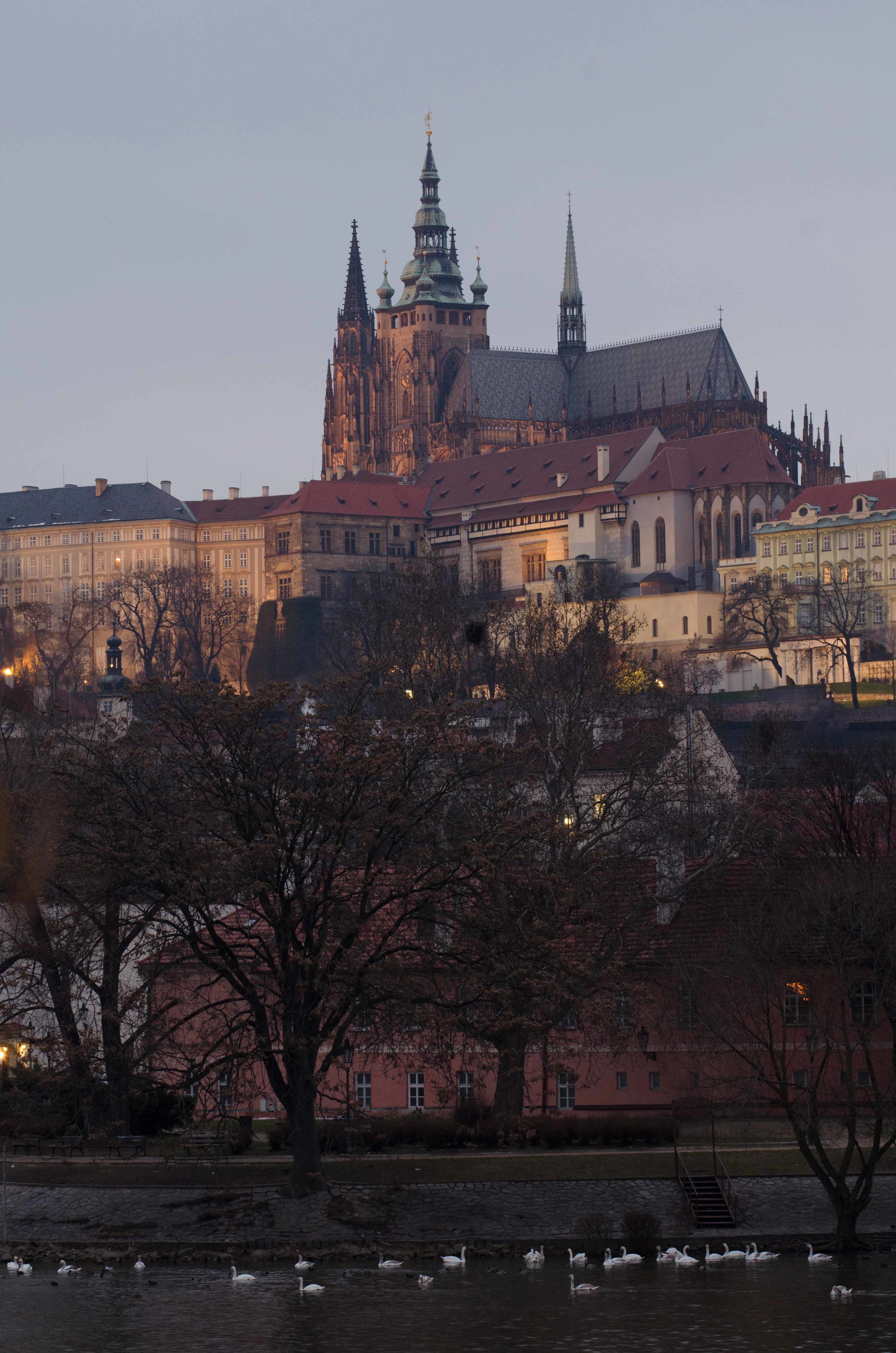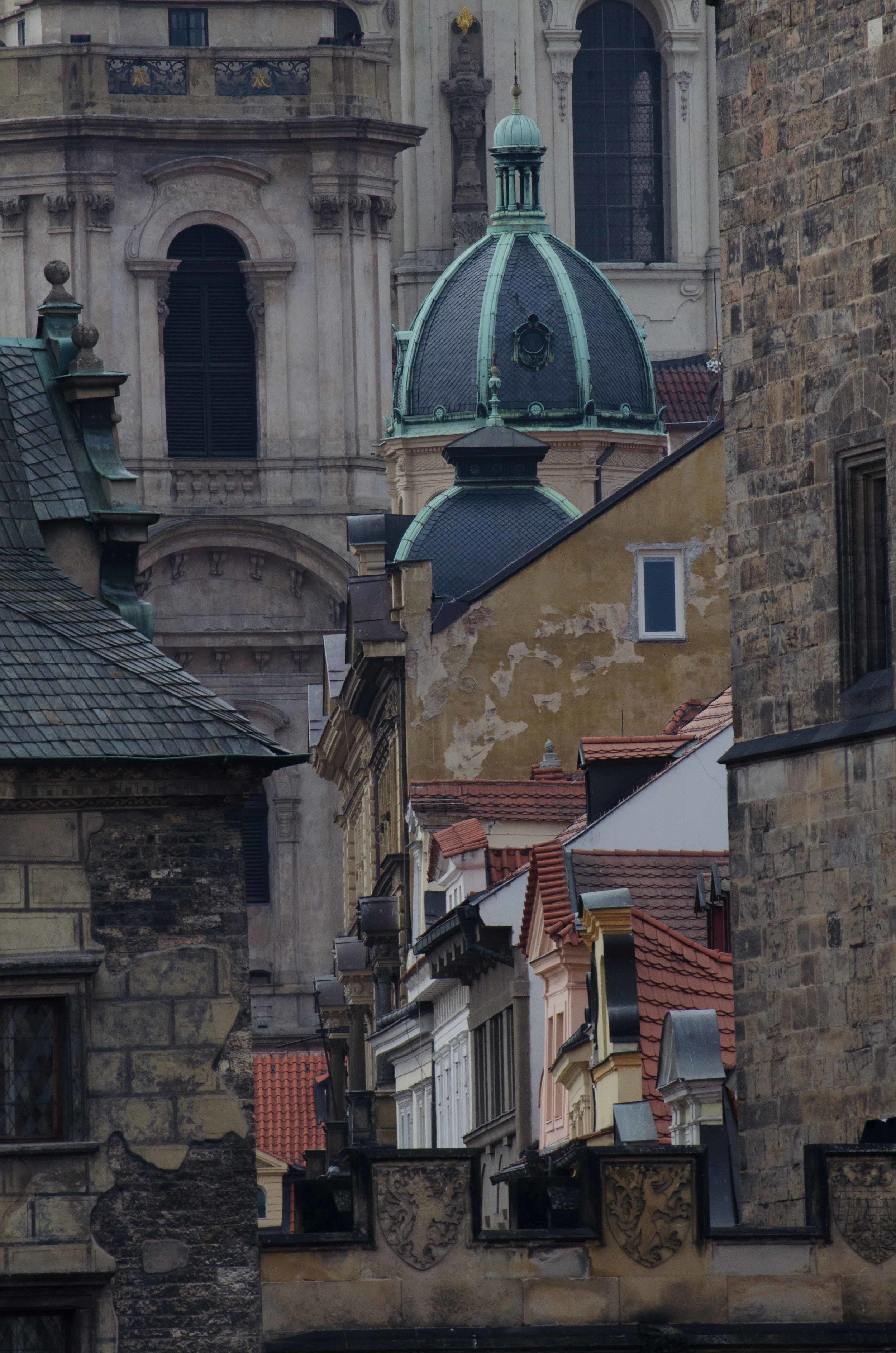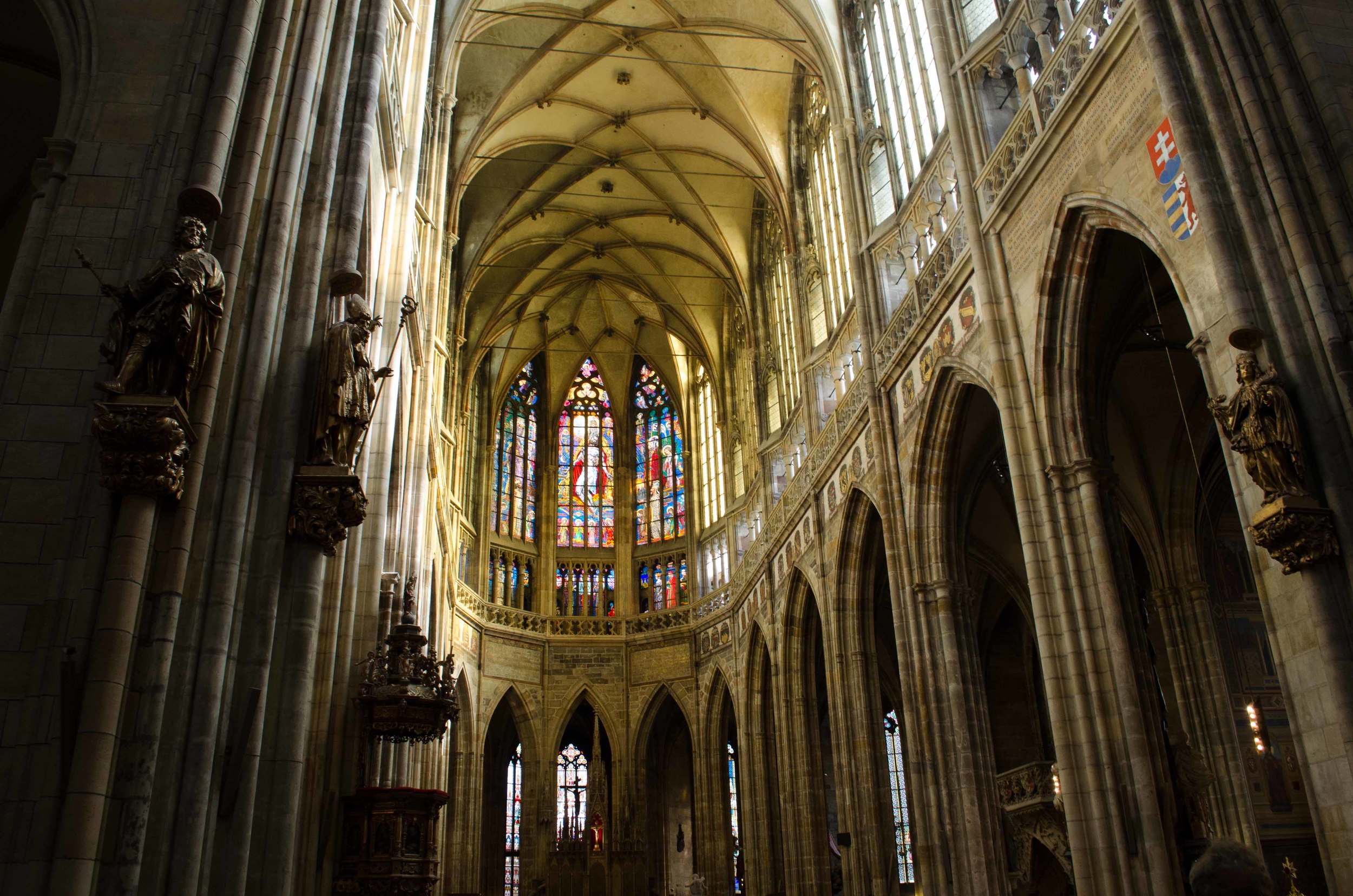Last weekend, I took a train to Prague, where I explored a cathedral, poked around the medieval old town, crossed back and forth across the Charles Bridge, learned a lot about the city's Jewish history, toured a fantastic art museum, saw a surreal theater/ballet/movie performance, had some definitely not watered down Budweiser, and even found a flock of plastic penguins. Though it would be impossible for me to fully convey my experience, I wanted to share a few highlights and overall impressions of the city. First, the cityscape. Prague reminded me a lot of Vienna (unsurprisingly, given that they were both important Hapsburg seats of power, and both led some of the late 19th and early 20th century architectural revolutions). There was a really dynamic blend of architectural styles, with medieval, early modern, modern, and even high modernist/cubist buildings fighting for space and notice, yet oddly all blending in together into a colorful jumble.
Furthermore, the older sections of town are a maze of older streets, adding to the feeling of surprise when you turn corners and see new things, or when a narrow alley opens up suddenly onto a major square.
The city also laid out along the river, and the river and its crossings (for centuries only one bridge, now called the Charles Bridge) have shaped the city's history and economic fortunes. Today, and in the medieval past, the river is towered over by the Prazsky Hrad, the castle/cathedral complex that is one of the more fascinating blends of past and present that I've experienced in a Castles/Cathedrals context.
The first Christian church on the site dates from the 10th century, when Prague's Prince Vaclas (Wenceslas) converted to Christianity.The crypt still contains some architectural remnants of the first church, but the present cathedral was  begun in 1394.
begun in 1394.
The new Gothic cathedral was begun by Charles IV in honor of Prague becoming an archbishopric, and he brought in foreign architects (first French and then, after his death, an Englishman). The death of the second architect in 1399 again halted construction, which was then completely abandoned as a result of the Hussite wars. (A side note, my train to Prague was called the Jan Hus. The other is called the Franz Kafka--I think I chose safely.)
It was not until the 19th century that work on the cathedral resumed, when this time Czech architects and artists took over, building the entire nave in a style that at first blush, fits smoothly into the overall medieval style and scale of the Gothic cathedral. It was finished in 1923, making the entire construction period almost six centuries! The next two pictures show the cohesion of the plan:
But what makes this truly fascinating is that when you look closer, the modern artists made the interior and exterior details, art, gargoyles, statuary, wall paintings, etc. unabashedly modern.
 The windows were designed and executed by contemporary painters, the crypt's royal tombs were redesigned to fit Beuax Artes styles, and there are Jugendstil touches everywhere. It is clear to see how this became a showcase for Prague's cultural and artistic goals, and also a symbol of the city's imperial history and connections.
The windows were designed and executed by contemporary painters, the crypt's royal tombs were redesigned to fit Beuax Artes styles, and there are Jugendstil touches everywhere. It is clear to see how this became a showcase for Prague's cultural and artistic goals, and also a symbol of the city's imperial history and connections.
Not to ignore the castle--it also has a modern afterlife, since it is still the everyday workplace (though not residence) of the Czech Prime Minister.
One of the other true highlights of my trip was spending a morning in the historic Jewish quarter, where I toured several synagogues, visited the Jewish history exhibits, and saw an extraordinary holocaust memorial. The Jewish quarter (now called the Josefov) dates to at least the late 1200s, when the Jewish community was granted its own liberties by the king (locking them thereby, as in France, into a strange dependent/protected relationship with the state). The medieval history was rife with tensions, including an awful 14th century pogrom, but in the main this was a thriving community, and in the 1700s and early 1800s, produced some amazing architecture within the district, including the stunning 1846 Spanish Synagogue. (I wasn't allowed to take pictures within the synagogues, unfortunately). Because of its beauty, when the Nazi's occupied Prague they left much of this old Jewish quarter intact, and then built a new, "model" ghetto outside of Prague at Terezen/Theresienstadt.
Which brings me to the memorial--beginning in the 1950s, a memorial was made inside the Pinkas synagogue; the names of the victims from Prague were written on the walls. In the 90s, UNESCO funding helped its restoration, and now 80,000 names are hand painted throughout the many rooms of the building. It was one of the most simple and shocking memorials I've seen. Crushing. Also, the official picture can't help you understand the scope--it is an entire synagogue covered in names. Floor to ceiling. My first glimpse of room after room of people floored me. http://www.jewishmuseum.cz/en/a-ex-pinkas.htm http://www.panoramio.com/photo/83401333 (Again, I couldn't take pictures, but it's really worth the moment to look at these links)
There was a museum spread between two of the historical synagogues, that focused on the community, its changing makeup, privileges, and persecutions. One thing I feel the need to point out though is that the only time that women appeared in the exhibits were as victims of the Nazis (or as resistors to them within the Prague Ghetto)--there were no sections on women's work, on the 19th century Jewish family, etc.
In contrast, the other museum in the Josefov, the Museum of Decorative Arts, was quite innovative, and taking some real conceptual risks, integrating the work of current sculptors, glass-blowers, and other artists alongside the historical design they showcase. The building itself is a stunning 19th century building, and it hosts collections of textiles, glass and ceramics, clocks, jewelry, bronzeworking, graphic arts, photogrpahy, etc. The entire hall of timepieces was really the highlight for me! It also has a "Cabinet of Wonders"--a room holding a hodgepodge of intricate and intriguing pieces from throughout the history of Czeck design. Adding to this was a truly interactive feel--not only the modern pieces in dialogue with the past, but also creatively designed wall cases that stretched from floor to ceiling and let visitors move the shelves up and down on a track (like those old cases for baseball cards and coins in collectible stores, but GIANT), and each room had the main items on display and then dozens and dozens of drawers you could open to see even more pieces. It was a delightful museum, and highlighted the reasons that Czech glass is really so famous.
As you can see, there was a lot that captured my imagination, and I'm really happy that I took the time to visit, even though I knew next to nothing about the city beforehand. A wonderful reminder of the payoffs of curiosity and a bit of spontaneity.




